“I want to make my story longer.”
That’s something I hear a lot of young writers say. Excited about embarking on a first novel-length work, the tendency is to get a little bit stuck on what to add to the Big Middle to lengthen the WIP. If that’s where you’re stuck right now, here’s what you need to concentrate on.
and
Back up and take a look at the scenes you’ve written so far. Examine them for 2 major factors.
1) Is each scene pointing to the story’s conclusion? In other words, every single scene must be absolutely necessary to the plot. It must:
- build the tension and conflict with the character’s goal
- develop the main character’s arc (growth, change)
It doesn’t matter how much you love, love, love a scene. You have to be ruthless enough to gut it if it isn’t necessary to the points above — or — it has to be changed in a way that makes it vital to the story.
2) If the scene is necessary, ask yourself the question, is it a mini-story? Does the scene have a beginning? Does it build to a dark moment? Does it reach a conclusive cliff-hanger that leads into the next scene?
Think of it this way: at the beginning of each scene a character has a goal. They react to it. There’s an outcome, and that leads to the next scene. Sometimes that reaction is the beginning of the next scene. But at its most basic form, each scene tells a small story that is part of the big story. I hope that makes sense to you. It’s like each little part of your life – an adventure you’re having that teaches you something, a romance that fails or thrives, a conflict that helps you grow — all those moments (scenes) develop your bigger Life Story. In the same way, scenes in a novel build and connect together to create a character’s bigger story.
So far, you might be asking, “If I have to eliminate unnecessary scenes, how will that make my story longer?”
Story length doesn’t come from having “stuff” happen (events, conversations) at least not a lot of unnecessary “stuff”. It comes with fleshing out and showing the stuff you likely already have in place. Occasionally it involves adding a scene that shows a character making a decision or an event enhancing conflict.
But starting with the scenes you have, search out adverbs and adjectives and imagine how you could rewrite the sentence or paragraph using stronger verbs instead, or how you could exhibit what is really going on in the character’s head without telling feelings or explaining actions. Instead of,
“The cold wind blew against her,”
try something like,
“Shivers ran up her arms as she braced herself against the wind. Why hadn’t she remembered a jacket?”
See how showing the cold by virtue of her actions actually added length? Plus it made us feel so much more on behalf of the character.
I repeat, often the key to adding length is using stronger verbs and exhibiting character actions instead of depending on adjectives or adverbs. (This is what is meant by the story-telling adage, “Show, don’t tell.”) Here’s another example of building a paragraph this way:
Paul hurried out the door. He brushed the snow off his car and revved up the engine. He was still so angry about his talk with Anna that he spun mud and snow up as he took off out of the driveway.
Now how about this:
Paul slammed the door and stomped down the walk, heedless of the slush slopping around his ankles and soaking through his shoes. Snow covered his car and he swiped it away with the sleeve of his shirt, muttering under his breath. When would spring come anyway? The door creaked when he jerked it open. The seats were cold and stiff and so was the engine. It moaned when he turned the key.
“Come on, start!” Another try and the car sputtered. He stomped on the gas and revved it, then leaned forward and scratched his fingertips at the frost inside the window.
Would Anna have regrets about his leaving? He glanced back at the house. Not a curtain moved. “Whatever.”
Paul threw the car into reverse and roared backward down the drive, the tires spraying mud and snow, his heart skidding raw along his nerves.
Doesn’t that do a better job of showing the scene, while playing it out too?
Remember, scene upon scene. It’s a slow build. Put yourself into your character’s shoes and walk in his steps. Feel what he’s feeling, but don’t tell us what that is — explore it. Your characters’ conflict will grow more intense and the novel will become thicker too. The day might even come when you’ll find yourself with the opposite puzzle of a novel too long for publishing. Now that’s another conundrum…




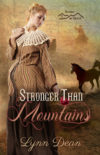
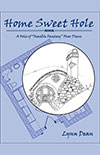

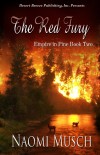
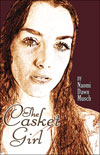
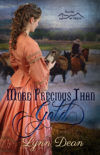
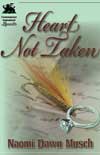

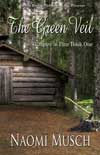

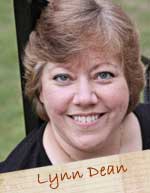


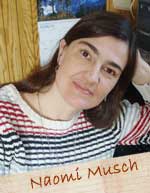


I will use the tips in this post RIGHT NOW to improve my WIP. So useful! At 66, I’m not a “young writer.” Hope that’s not a requirement for Using this fantastic site.
Lol! Nope, not a requirement. Glad you dropped by and found it useful!
Naomi’s right. When we began this blog, we thought our “students” would be homeschooled high school students, but we quickly realized that writers of all ages were using the tips and prompts. To me, that’s even better. Who says we ever have to stop learning?
I certainly don’t fall under that category of homeschooled HS student. My scenes have a tendency to be short, though not because I’m telling and not showing. I had an editor critique me at a conference, and she said I wasn’t getting into the character’s head enough. I’m going to have to investigate that in my books.
Thanks for dropping by, Karlene. I hope the editor who told you that gave you some specifics. Sounds like you might just need to sit in the scene a while and think about more angles the character could be thinking of or considering. I know one well-known author who suggests scenes shouldn’t be shorter than 1200 words. I’m not sure I agree with that entirely, but it does give a bit of a goal to shoot for. Blessings~